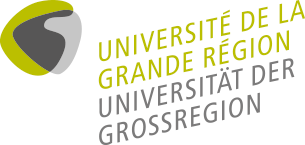Domaine-phare UniGR : Science des matériaux et utilisation rationnelle des ressources
- Recyclage des déchets contenant des métaux et procédés innovants de traitement des minéraux
- Modélisation de matériaux à l’aide de simulations multi-niveaux
- Nouveaux procédés de recyclage du béton
Ces trois champs thématiques sont représentatifs d’une foule de différentes problématiques et approches actuellement mises en œuvre dans le domaine des sciences des matériaux. C’est dans ce domaine que l’Université de la Grande Région voit la possibilité de mettre à profit et de mutualiser les expériences et les compétences de toutes les universités partenaires.
Les champs thématiques ayant déjà été abordés ou l’étant encore actuellement, sont les suivants :
Advanced microstructure analysis
One of the key elements in materials quality control is microstructure characterization, as it relates production process settings with the final functionality of a material. Hence, precise and objective microstructure characterization provides essential information that allows tailoring functional properties of the material through adjustment of processing parameters and raw materials composition.
Furthermore, when dealing with state-of-the-art components that are made with new materials, quality control during the whole product life-cycle is getting essential in order to guarantee efficient and high quality production, proper operational stability, safety and reliability as well as optimum in-service performance of such components. Quality control using innovative methods of nondestructive testing (NDT) which are integrated in the production process with its different process steps (molding, forging, machining, assembly and joining, surface finishing) can offer excellent possibilities when high tech materials are thought to max out their mechanical, optical or chemical properties. Safe operation or advanced repair procedures for mixed-material assemblies can be inspected and even monitored with innovative NDT techniques. 3D-visualization and automated contactless inspection of complex shapes are a prerequisite for going to the limits of such modules and component parts, especially in light-weight design with ultra-highstrength steels, high performance light metals and alloys - and of course, for fibre reinforced materials (e.g. CFRP, GFRP).
Contact: Prof. Mücklich, Saarland University
Composites materials with metal/ceramic matrix
Construction materials
Matériaux de construction : Les bétons recyclés
Peut-on recycler le béton? Et comment peut-on utiliser les bétons recyclés ? C’est autour de ces questions phares que – suite à plusieurs ateliers UniGR – le projet de recherche transfrontalier „le potentiel d’utilisation des bétons recyclés“ a été créé. Les universités du Luxembourg (Danièle Waldmann), de Liège (Luc Courard), de Lorraine (André Lecomte) et de Kaiserslautern (Jürgen Schnell & Wolfgang Breit), en coopération avec des partenaires privés et publics, ont déposé un projet autour de cette thématique dans le cadre du programme Interreg North-West Europe.
L’industrie européenne de construction utilise la moitié des ressources en matières premières et produit en même temps une quantité énorme de déchets minéraux. L’objectif de l’UE est de diminuer les déchets de construction et de démolition d’ici à 2020 et de les recycler à hauteur de 70%, selon les principes de l’économie circulaire. Actuellement, seulement 50% sont réutilisés.
Une coopération transfrontalière plus étroite au sein de la Grande Région pourrait, dans ce contexte, être très judicieuse pour les entreprises, étant donné que pour les entreprises de construction, du béton ou du recyclage, chaque kilomètre supplémentaire lié au transport est très onéreux.
Ecomaterials for building industry: advances and future prospects in the Greater Region
Magnetic materials
Aux Universités de Lorraine, de Kaiserslautern et de Sarrebruck, des groupes de travail étudient les phénomènes magnétiques et leurs applications innovantes. Ces groupes de travail se sont unis pour former le Réseau de Magnétisme de la Grande Région (Greater Region Magnetism Network, GRMN), afin de mutualiser leurs activités, de développer une formation concertée ainsi que de procéder de manière exemplaire à un transfert de technologies. Bref, GRMN est sensé être une initiative visant à tirer parti des synergies dans un domaine scientifico-technique très innovateur, qui vise à rendre à la Grande Région son attrait sur le plan scientifique en tant que site d’implantation.
L’initiative est une mesure concrète réalisée sous l’égide de l‘Université de la Grande Région (UniGR). Le projet a été cofinancé par le programme INTERREG IVA-Grande Région.
Pour plus d’informations, veuillez contacter Stéphane Mangin (Université de Lorraine).
Mineral processing and recovery of critical raw metals
Terres rares, métaux précieux et autres métaux ou minerais de grande valeur sont aujourd’hui indispensables dans la fabrication de nombreux produits de haute technologie.
En Europe, un grand nombre de ces matières premières doivent être importées. Afin de ne pas dépendre entièrement des importations, il devient de plus en plus important de recycler les déchets contenant des métaux. Toutefois, ce domaine fait encore état de besoins importants en matière de recherche et de développement.
Contact :
Prof. Hans-Jörg Bart, Prof. Paul Ludwig Geiss, TU Kaiserslautern
Prof. Stoyan Gaydardzhiev, Université de Liège
Eric Meux, Université de Lorraine
Multiscale simulations
The modelling of material involves multiple scales. In computational problems mechanical properties and structural behaviour are described in a range varying from atomistic scale, nanoscale or microscale to macroscale. On the fine scales, the size and orientation of local inhomogeneities influence the mechanical behaviour while on the coarse scale or macroscale the average behaviour has to be taken into account. Usually different methods are used to model the processes on the different scales, e.g. molecular dynamics can be applied to model the atomistic scale response while the finite element method can be used to describe the behaviour on the macroscale.
If specimens become smaller or the local inhomogeneities become stronger, processes on multiple scales start to interact. Therefore, it is one of the essential questions in the modelling how to bridge the gap between fine scale quantities, like atomistic or molecular deformations or local fine structures to macroscale quantities like stress and strain. Multiscale simulations, with such features as high efficiency of continuous models and considerable accuracy of microscale models, are promising methods to resolve this problem. Different scales are connected via upscaling processes, i.e. appropriate homogenization processes that are used to compute the average properties of the macroscopic model.
The following situations may occur in multiscale modelling:
Single sided transference: Macroscopic properties of the material are computed on a small scale based on the locally inhomogeneous properties by homogenization techniques. The averaging is applied once and for all and the results are used on the macroscale
Multiple domains coupling: In a certain domain of interest a small scale model is used while in regions far away the macroscopic model is applied. The macroscopic properties should fit to the microscopic properties especially at the interface between the domains both models must fit together.
Multilevel finite element modelling (FE^2): The constitutive relation of a macroscopic model is replaced by a microscopic model and an appropriate homogenization/projection method. In this case the coupling is two-sided because the macroscopic state influences the homogenization procedure while the homogenized microscopic model determines the macroscopic material behaviour.
Seamless multiscale coupling techniques: Depending on the local properties the model can switch between a full resolution microscale model and a macroscale model. The seamless coupling is required not only on the multiple spatial scales but also on the temporal scales.
Contact:
Prof. Dr.-Ing. Stefan Diebels, Saarland University
Modern routes to solar energy conversion and storage
Tailored materials interfaces
Tailored materials interfaces are key elements in the design and function of modern materials. Prominent examples of interface-dominated materials are to be found in industrial sectors such as energy, electronics, automotive, optics and biomedicine. Scientists in the Greater Region perform valuable research activities in this promising area, but often without the coordination that could make these efforts even more efficient and visible.
Contact: Prof. Arzt, Leibniz-Institut für Neue Materialien / Saarland University



